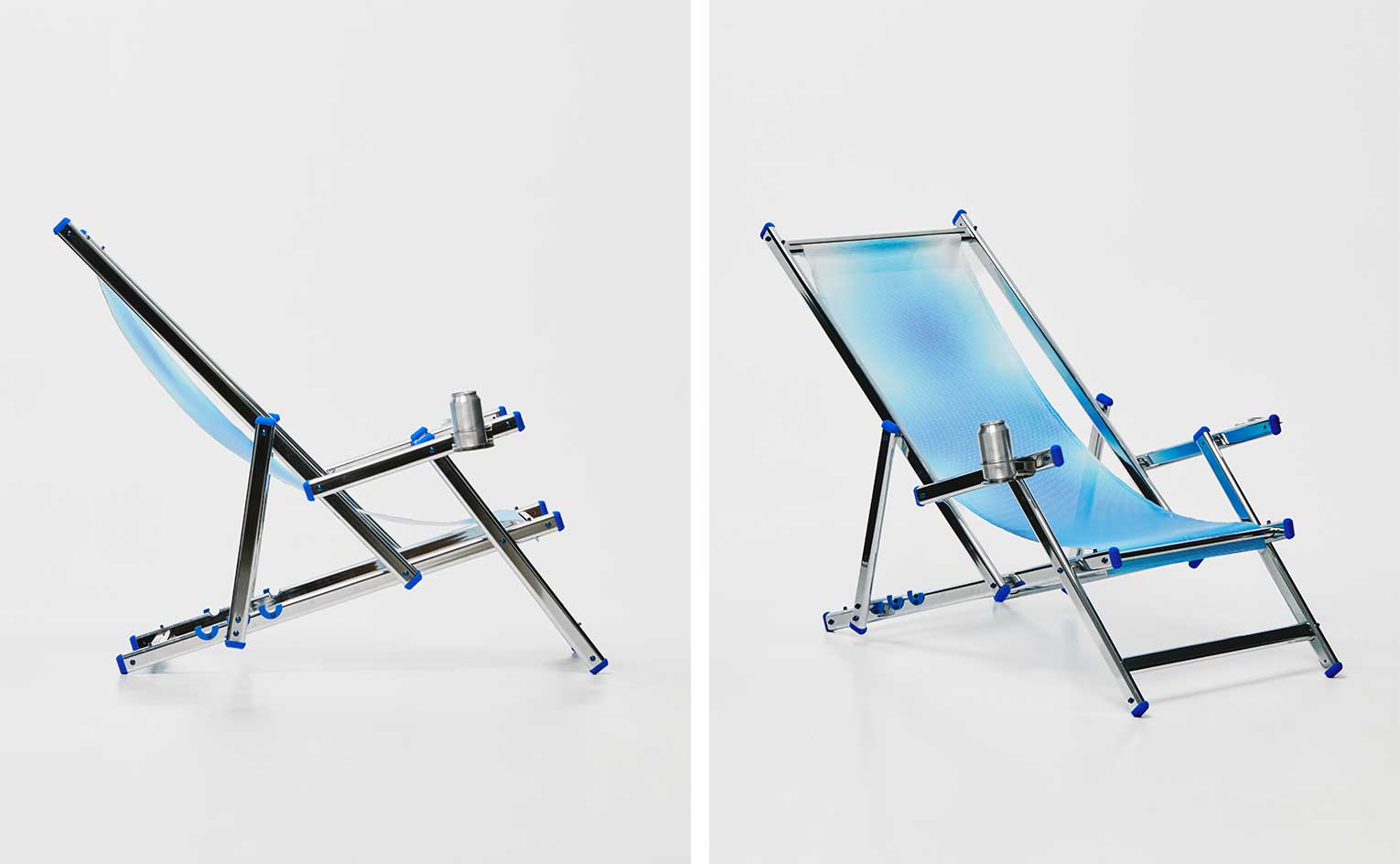
The self-described 'disruptive' Mayrit Biennial of Design and Architecture in Madrid is the brainchild of designer Miguel Leiro, a Madrileño who spends his time producing idiosyncratic furniture and organizing stellar people with provocative ideas. During a whirlwind of celebratory openings and late-night parties in late May, set in and outside the M30, the motorway that encircles the city center, the 2024 biennial brought together locals and visitors from museum professionals to young entrepreneurs that came together in a wholesome and cooperative exchange of views on contemporary design that felt fresh and open to dialogue and interpretation.
Mayrit Biennial 2024: 'Wet Dreams'
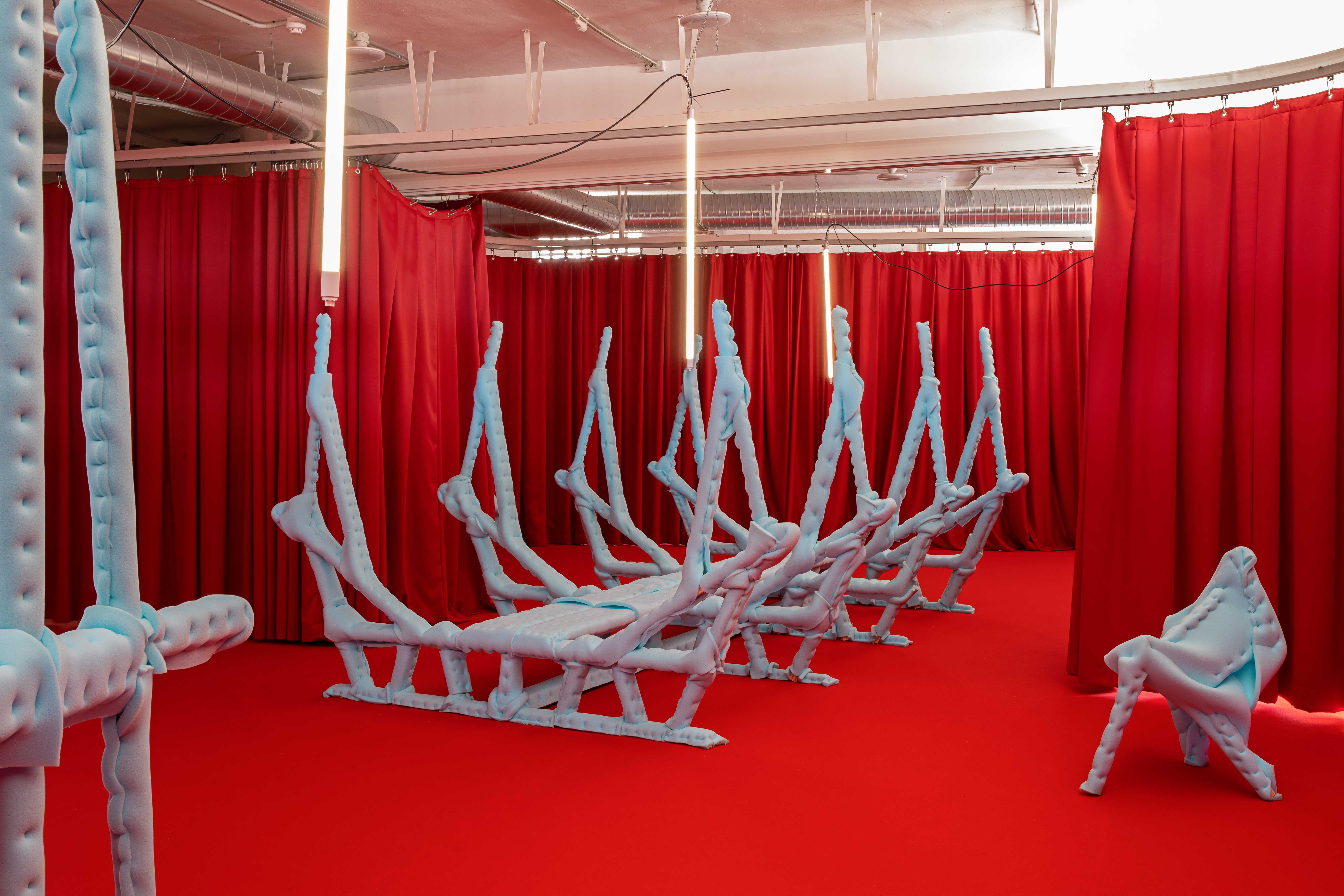
Together with curator Joel Blanco—design researcher by day and performer by night—Leiro tapped architect and Wheelwright Prize recipient Marina Otero Verzier to develop the theoretical framework and title of the 2024 biennial, "Wet Dreams", a more optimistic follow up on the 2022 edition, dubbed "Drowned Worlds".
'A key term for the biennial is ‘disoñar,’ from activist León Octavio Osorno who coined that term [dream design],' Otero says. 'We wanted to think about water and fluid matters as catalysts for eco-social relations, forms of embodiment and desire, and think how tubes and pipes and valves, all these architectures, are somehow allowing or preventing certain relations to happen, both sexual [and] ecological.'
At Centro Centro, Otero’s exhibition "Wet Dreams" (Centro urged the curators to refrain from using the Spanish translation of the term as posters in the city would disconcert residents, 'Which is what we wanted!' Otero insists) goes beyond the built environment and into the human body, allowing design to happen from impulse and without restrictions. Traditional practices like pro-pluvial prayers and an 18th-century diagram of a glass bottle that used leeches as weather forecasters, share the space with contemporary projects like Philippe Rahm’s temperature informed interior design and Andrés Jaque’s climate-conscious irrigation machines. Former students of Otero’s Social Design Master program are also included, with prototypes from a machine that turns human faeces into fertile soil by Rebecca Schedler, to a Tear Gun by Yi-Fei Chen that freezes and shoots crying secretions as an act of empowerment.
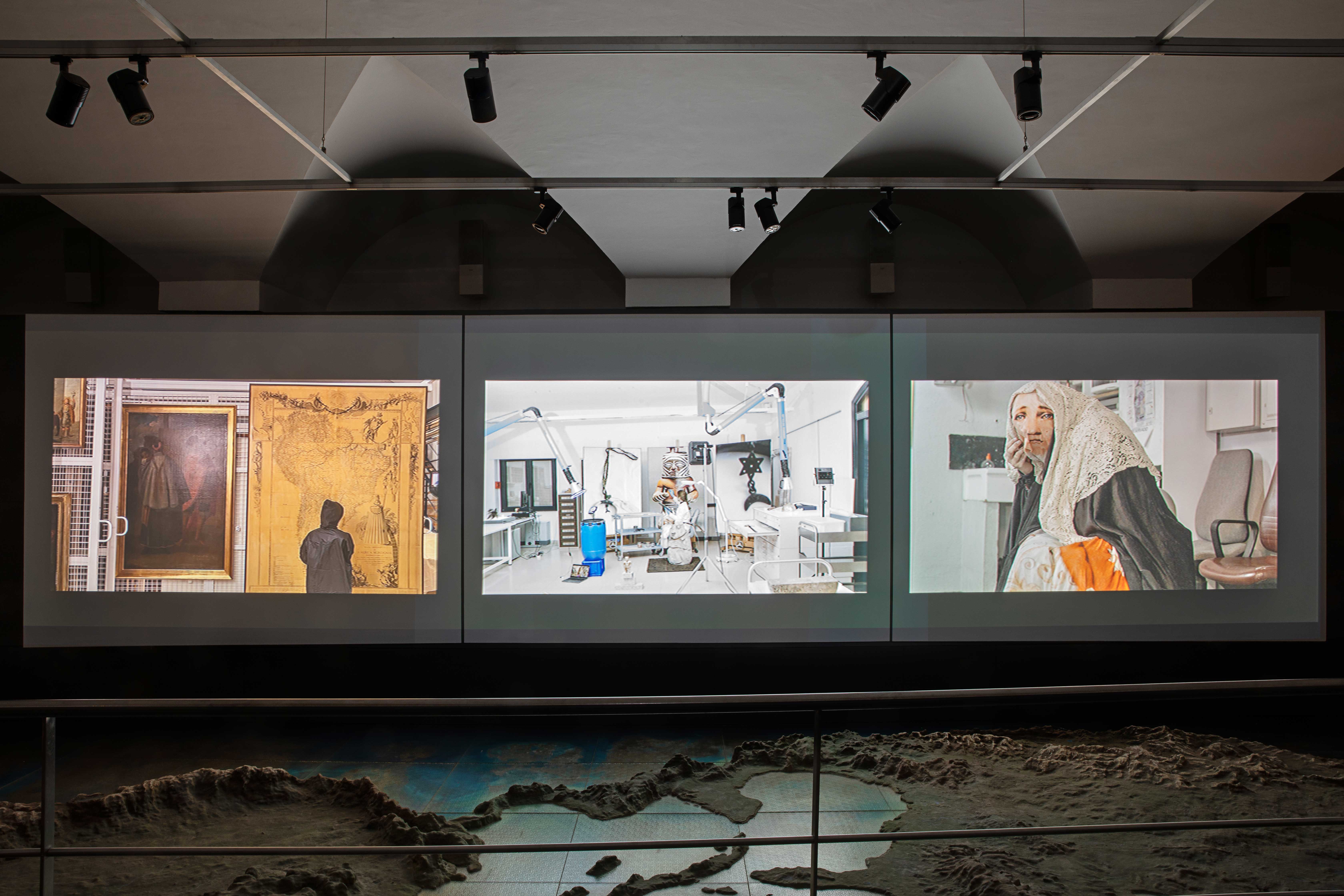
The body takes centre stage breaking taboos throughout the biennial. Mirror Mirror at the Museo de América—a monumental Francoist building—curated by Grandeza Studio, brings together artists working across visual media staging autofictional 'identities and futures dissident from the patriarchal-colonial and Eurocentric legacy' of the museum.
Reactionary anti colonial performances include Sangre Pesada, a six-part film by Naomi Rincón Gallardo summoning ghosts reclaiming their now toxic wasteland in Mexico, and Ofrenda where artist Elyla removes a pinned mask from his bleeding flesh and proceeds to ingest it facing the viewer. Nearby, a video game invites visitors to an 'agrarian reform party' in Colombia, and AI-generated 'treasures' attempt a symbolic repatriation of the Quimbaya Treasure permanently housed in the museum.
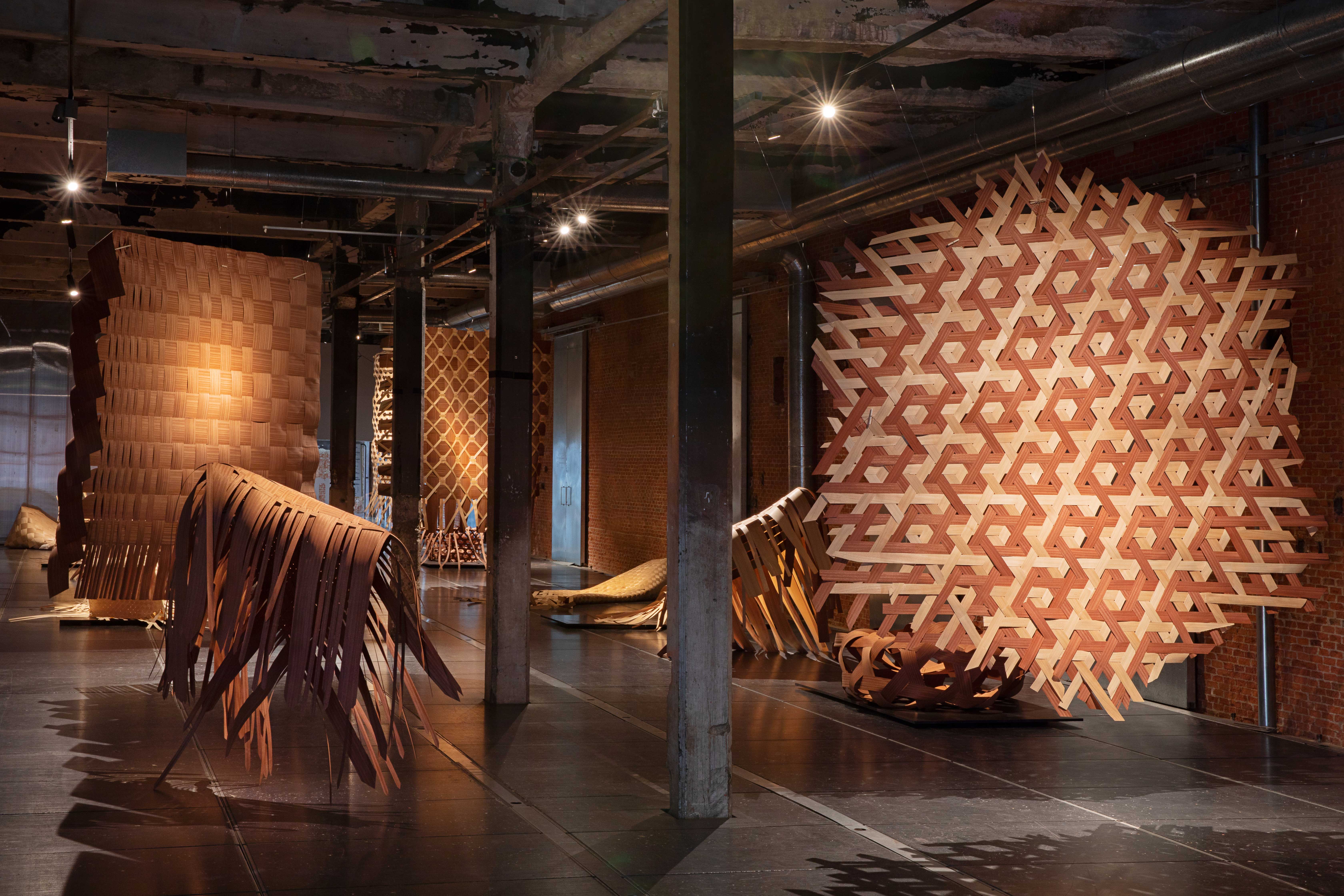
In the Central de Diseño at Matadero, the city’s former slaughterhouse, Traces of Transformation, a display of monumental woven works made from wood veneer was the result of an intensive two-day workshop led by Idoia Cuesta and Inés Sistiaga. Also at Matadero, and in stark contrast to the hands-on craft and communal approach, futurist Cecília MoSze Tham explores the use of LLMs to understand plant communications and societal shifts in the near future among two house-like sensory activated structures.
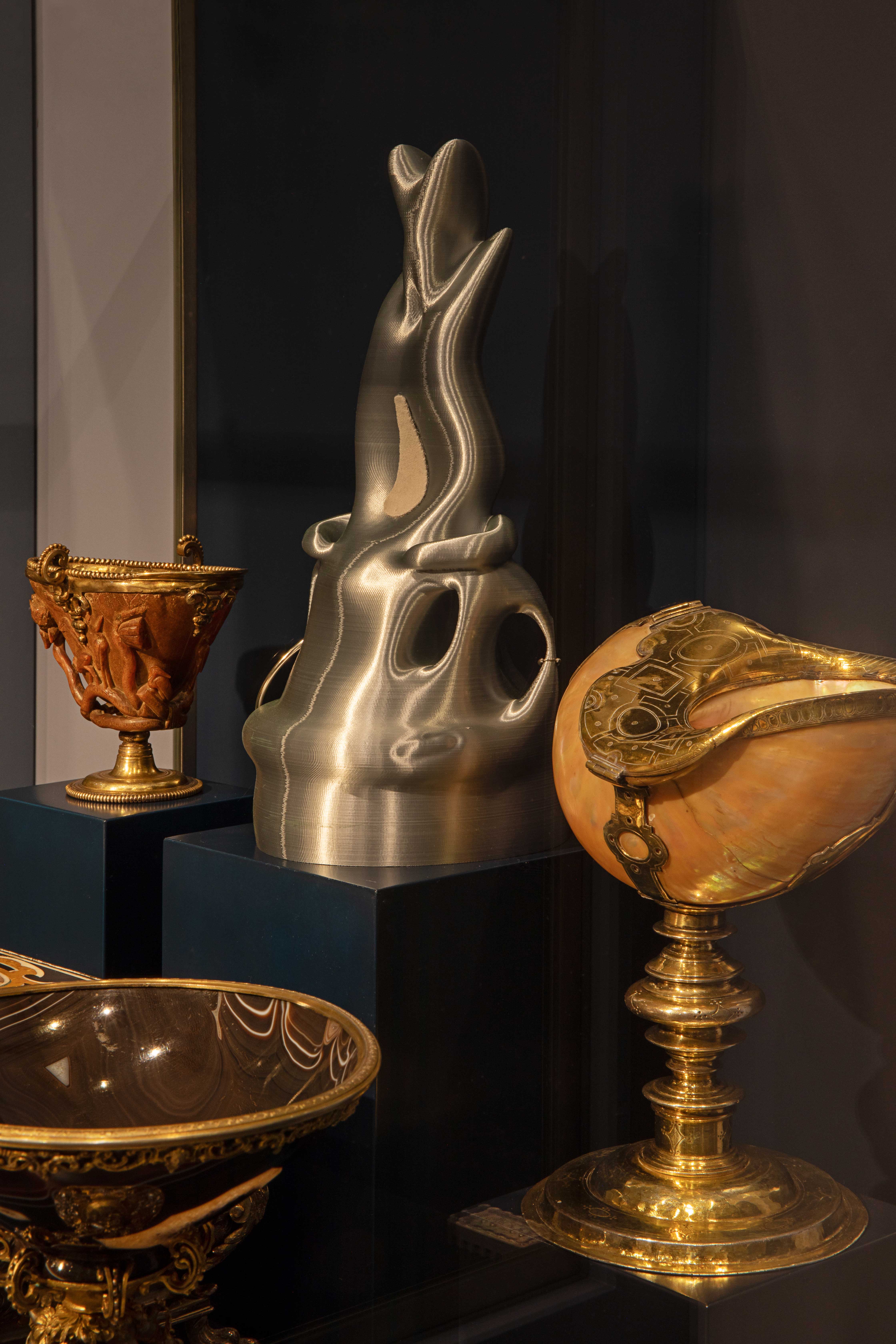
Also centered around digital exploration, HyperStudio invited artists to address the contradictions and complexities of materiality at the Museo Nacional de Artes Decorativas, a museum founded in the early 20th century that feels stuck in time, largely due to constant government oversight. Pulsa’s 'pseudo-cyborg organisms' surreptitiously intervened the Treasure Room, while Gastón Lisak’s Totems of Today gave new meaning to our knack for collecting by digitizing and 3D printing in large scale items as commonplace as a fidget spinner, a stress ball, or a frog-shaped coin purse.
Taking cues from the aquatic theme (Mayrit is also the arab term for 'place rich in water') at the IED in Carabanchel, Cinema Parentesi installed Soft Flesh, a temporary body enveloped in silky red drapes evoking the inside of a whale. 'This was all done in a very Rocambolesque way,' says Cinema’s Stef Fusani, an artist, designer, and material culture researcher, of the idea of being gobbled up by a much larger animal, continuing to live inside that world, and turning that into a party. 'We wanted it to be very raw, very vast, and a little punk,' he says of the scattered furniture pieces haphazardly wrapped in baby blue upholstery foam. 'But also to make a space for people to come and have a good time.'
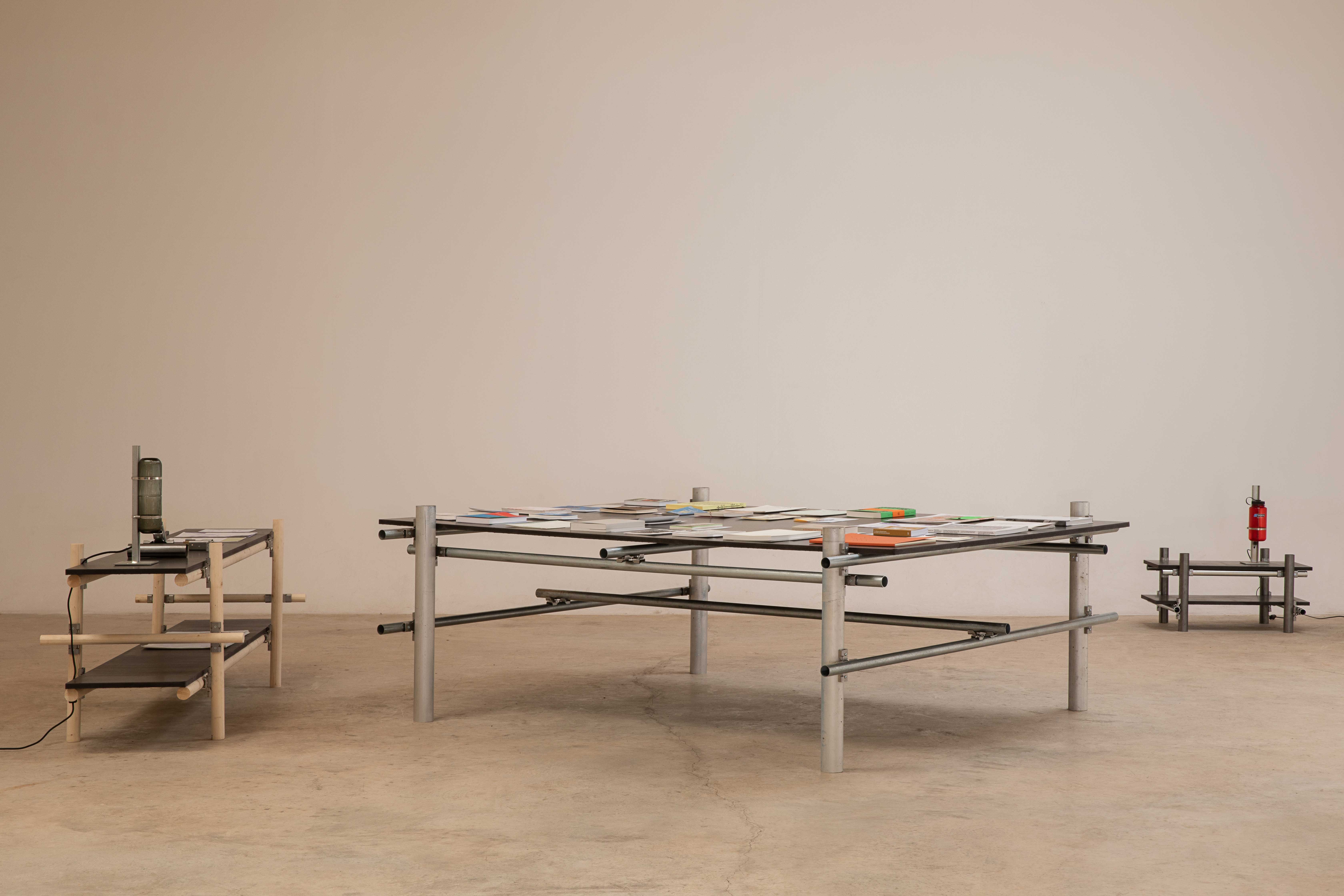
Over in Vallecas, at Acme Estudio—a creative studio and artist residency owned and operated by three women and their dogs—Tambourine, an itinerant independent editorial archive, and Vicent Orts, an industrial designer from València, presented the result of a residency that took place in a cattle farm outside Madrid: an adaptable metal joint used to configure modular furniture and a research publication of the collaborative process.
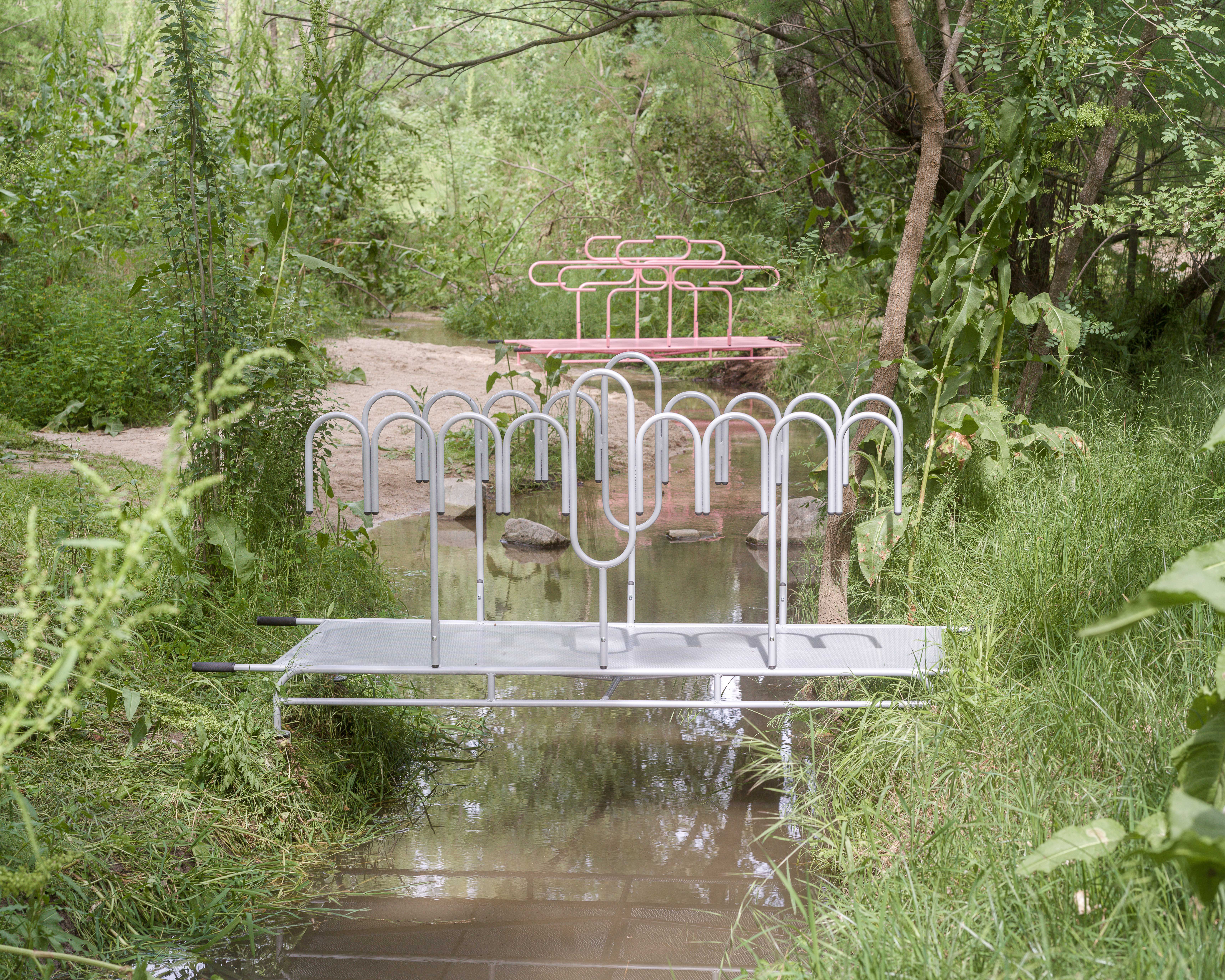
Similar satellite exhibitions like Small Portable Pedestrian Bridges by architect Miguel Lantero and designer Francisco Jordán of Fun Furniture For Friends, Kauani’s knitted lamps, and Bate’s open-call premised design store, highlighted young talent and hosted good times around paella, fresh fruit, and cold beer.
Maybe it’s the siesta culture but, at least to me, the opportunity to meet and converse with young designers and established curators and thinkers on the same level is what made this event feel like a much needed breath of fresh air.







